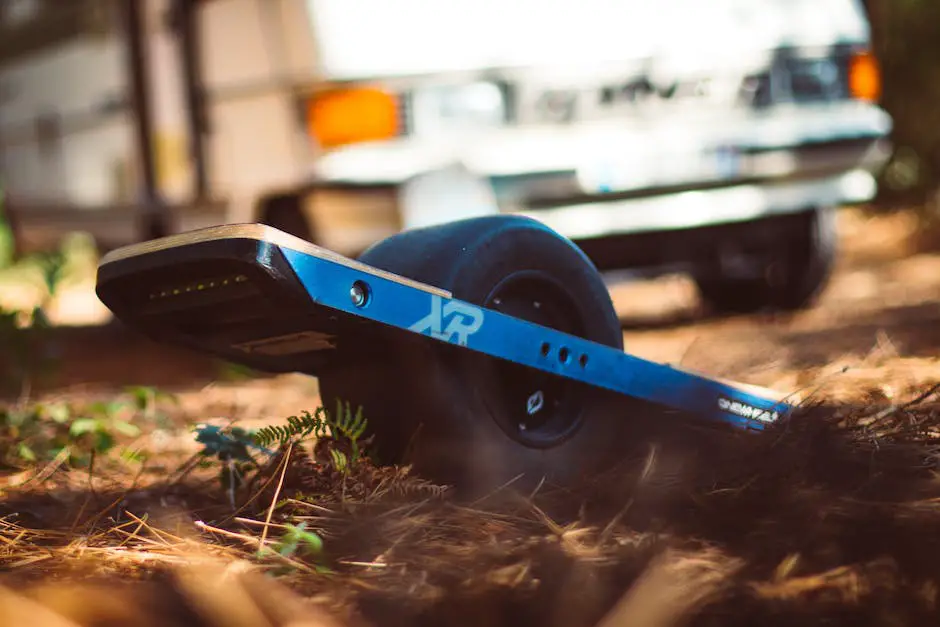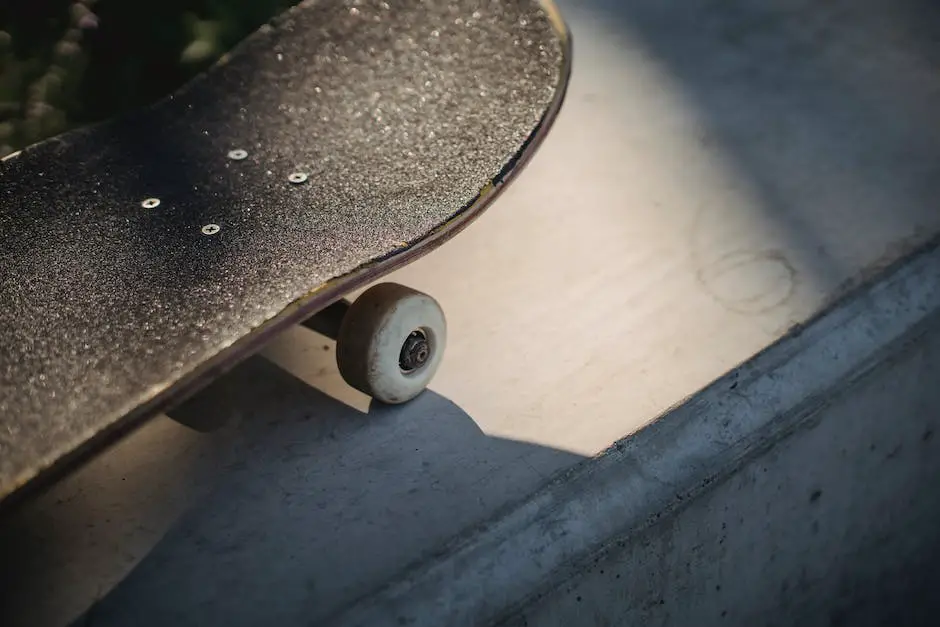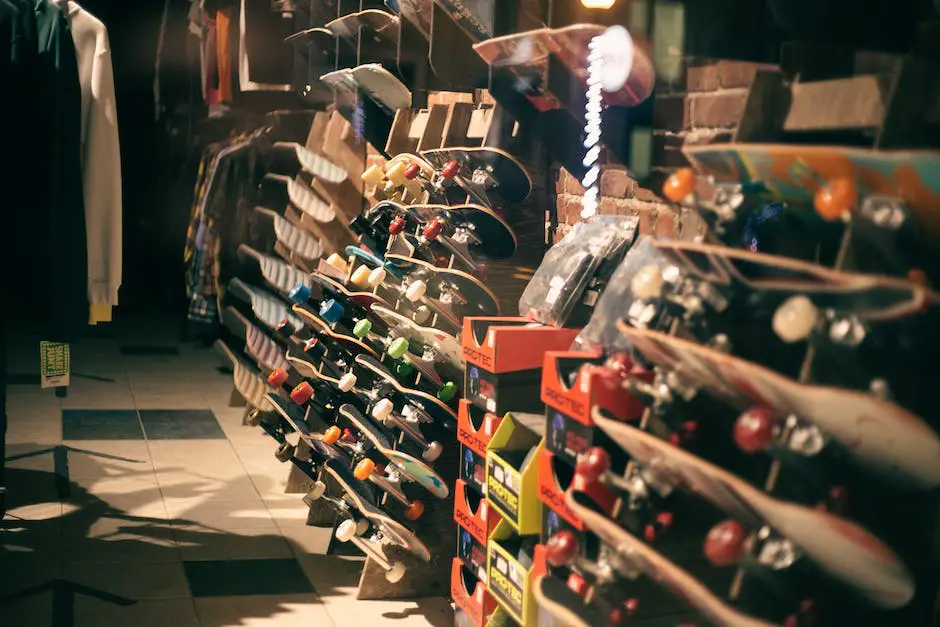The allure of riding an electric skateboard is hard to ignore. Paving your way through streets and parks, feeling the breeze on your face, it’s a hobby that combines the thrill of speed with a personal touch of style. And whether you’re a novice rider or a seasoned skateboard enthusiast, perfecting your ride comes down to various factors—most importantly, the deck material. Wood, bamboo, maple, carbon fiber—each one has a narrative of its own in terms of weight, durability, flexibility, and cost. This article plunges headlong into the ins and outs of electric skateboard deck materials to help equip you to make an informed decision for your ultimate ride.
Understanding Deck Materials
If there’s one thing every boarding enthusiast agrees upon, it’s this – not all skateboard decks are created equal, especially not when it comes to electric skateboards. The material used has a crucial influence on not only the durability and longevity of the board but also on the riding experience itself. Over time, various new materials have entered the electric skateboard industry, each with distinctive characteristics.
Wood – the Classic Choice
The majority of skateboard decks, electric or otherwise, have been traditionally created out of wood, with seven-ply maple being the favored choice. Why? Well, that owes to its strength, flexibility, and ease of carving into diverse shapes. It beautifully amalgamates durability with a comfortable ride, absorbing much of the shock and vibrations produced. But remember, weather elements like moisture can shorten its lifespan and performance.
Composite – a Mix and Match
Composite decks are rising in popularity, especially in the electric skateboard market. These are made by mixing different materials, typically a blend of fiberglass, foam, and plastic. One of the main draws for a composite deck is its super light weight. Lighter decks mean increased range and speed for electric skateboards. They are also less susceptible to water damage compared to wood. However, they tend to be stiffer, which may impact the overall ride feel.
Carbon Fiber – the High Roller
Next up is the high-tech, high-performance, and high-priced option – carbon fiber. Imagined for those who crave the premium feel, carbon fiber decks offer an unparalleled combination of strength, lightweight, and durability. An almost negligible flex translates into high stability at speeds, a boon for electric skateboard riders. These boards tend to resist weather elements and impacts exceptionally well. But they come at a premium price and feel stiff underfoot, which may not be to everyone’s liking.
Aluminum – the Sturdy Option
Not as common as the other options, but significant in its own right, is the aluminum deck. Its claim to fame is exceptional durability and strength. If long life is a priority, aluminum decks won’t disappoint! They stay unfazed in the face of rough usage and adverse weather conditions. Plus, they add an element of unique charm with their metallic finish. On the downside, they cost more than wooden or composite options and offer a less compliant ride due to their rigidity.
Bamboo – Embrace the Flex
Last but not least, bamboo decks bring a refreshing blend of strength and flexibility to the table. They absorb shocks and vibrations well, resulting in a smoother and comfortable ride. They also enable impressive carving ability due to their considerable flex. On the downside, too much flex might sometimes feel less stable, especially at high speeds.
In a nutshell, deck material has a massive influence on the electric skateboard’s overall performance and feel. Each material has its own set of pros and cons, and the ideal choice depends upon individual preferences, riding styles, and budgets. Happy skating, folks!

Suitability of Materials
Practical Implications: The Performance of Different Deck Materials Under Real-Life Conditions
Delving into the granular, hands-on details of skateboarding, choosing the right deck material could make the difference in your riding experience. The pantheon of deck materials—inclusive yet distinct—offers an array of unique properties that affect the skateboard’s behavior under practical conditions.
When it comes to traditional wood decks, an aficionado might note they shine in most situations due to their timeless design and functionality. Manufacturing wood decks involves layering thin sheets of wood, which, in turn, promotes flexibility and keeps the board durable, handling impacts with ease. In real-life scenarios, wood exhibits a graceful aging process, evolving with the rider, despite the potential susceptibility to water and dampness.
Composite decks are another favorite among riders, and for good reason. Comprised of wood and other materials such as fiberglass, these durable, stable, and light skateboards perform consistently under a range of conditions. Skateboarders looking to venture into electric skateboarding value composites for their capacity to support motors and batteries without compromising performance. However, a point to consider is that these decks tend to be stiffer than their all-wood counterparts, which might slightly alter the overall riding dynamics.
When considering carbon fiber decks, one cannot overlook their position as a premium choice. Hardened enthusiasts often appreciate the balance they offer by combining strength and flexibility in a light, thin package. Such decks effortlessly negotiate twists and turns even at high speeds, delivering an unrivaled performance under practical conditions. Although, it is worth noting that due to the complex production process, carbon fiber tends to be more expensive.
For riders after durability, aluminum decks provide an unyielding resilience in face of wear and tear. Besides being rust-resistant and robust, aluminum decks showcase an attractive, sleek design. However, their rigidity and lower shock absorbance could prove a deterrent for riders prioritizing comfort.
The laid-back, cruiser rider segment would probably feel akin to bamboo decks. Renowned for their flexibility and comfort, bamboo decks offer a high level of shock absorbance, resulting in smoother rides, whether cruising down the boardwalk or freestyling. However, despite this advantage, bamboo can be prone to splintering and cracking over time, posing potential risks for the unwary user under extensive usage.
Despite the wide spectrum of deck materials available, remember that there is no one-size-fits-all solution. Each materials thrive under different practical conditions and might falter under others. Furthermore, external factors such as temperature, moisture, or just good old wear and tear, can influence a deck’s performance. Careful consideration, based on an individual’s riding style and preferences, can render the task of deck selection less overwhelming. After all, more than an extension of one’s footwear, the deck complements personality, style, and matches the pace of your life. So, pick wisely, and may the ride be an extension of yourself!

Maintenance of Deck Material
Once you’ve made the exciting decision to join the world of skateboarding and you’ve figured out the kind of deck material that tickles your fancy, it’s important to understand how to maintain that new toy. A well-kept skateboard deck, whether it’s made from durable aluminum or timeless wood, contributes to a better ride and extends the deck’s lifespan. So buckle up as we cruise through the care needs and obstacles for different deck materials.
Now, we’ve already talked about the benefits and drawbacks of wood, composite, carbon fiber, aluminum, and bamboo decks. The care for each of them, naturally, varies based on the material.
For the traditional wood decks, the main challenge lies in combating water damage. To maintain these decks, they should be stored in a dry, cool place, away from direct sunlight. Regular cleaning and occasional sanding can also help prevent dirt buildup and grime that can degrade the wood over time. Wood decks could also benefit from a light coat of a water-resistant sealant to provide added protection against moisture.
Composite decks, increasingly popular among electric skateboard users, are generally made from a combination of wood and plastic. These have the advantage of being more resistant to water damage than pure wood decks but still require similar maintenance. Store them properly and clean them routinely to avoid dirt and build-up that can lead to wear and tear on the material.
Carbon fiber decks impressed us with their strength-to-weight ratio. However, despite their robust nature, they’re not invincible and are susceptible to scratches and dings. Spot clean these boards with a moist cloth and mild soap to remove dirt and prevent unsightly markings. Avoid harsh cleaners that can eat into the carbon material.
Moving on, aluminum decks win in the durability department. They can handle rough treatment and extreme conditions. However, they’re susceptible to corrosion over time, especially if you live near the sea where salty air is abundant. Routine cleaning and an occasional pass with an abrasive pad or sandpaper can remove minor surface issues and prevent corrosion from taking hold.
Last but not least, high-flex bamboo decks. These need consistent care as they react more to environmental changes compared to other materials. To maintain a bamboo deck’s flexibility and avoid cracks, store it inside, away from substantial temperature variation, and apply a wood conditioner as necessary.
So there you have it—the upkeep needs and challenges for different skateboard deck materials. Remember, the deck is a skateboard’s heart and soul. Protect it and your rides will be smooth, your tricks phenomenal, and your experience nothing short of awesome!

User Reviews and Experiences
Diving deeper into the world of skateboard deck materials inevitably brings us to the realm of maple veneer decks. Now, while bamboo and maple might seem similar, rest assured that they’re not. Maple decks are tremendously durable and can handle the sort of extreme weight pressure that this sport often requires. Its durability makes it less prone to wear and tear over time, particularly a good choice for the heavy thrashers out there. Understand though, that with this resilience, comes a rigidity that might not be as forgiving for the more easy-breezy riders.
Another variety that skateboard enthusiasts have been experimenting with, is the fiberglass composite deck. Unlike its carbon sibling, fiberglass decks boast lighter weights and are less expensive. The fascinating bit about these decks is that they may be assembled with different curvature configurations. This adaptability allows riders to tailor the skateboard according to their riding style. Fiberglass is noted for its high tensile strength and impact resistance, which can be a significant advantage for riders who enjoy performing tricks that might be taxing on the skateboard.
Next on the list are plastic decks and their own unique quirks. Perfect for the skateboard novice, plastic decks are known for their cheap cost and variety of flamboyant designs. The catch being plastic decks do not offer the same durability or flexibility as the other materials. It must be noted that these are typically preferred for a casual cruise, rather than an attempt to land the next big trick.
Caring for these aforementioned decks requires a sense of vigilance. Maple decks need to be kept away from prolonged moisture exposure and require regular cleaning with a soft cloth. Fiberglass decks would benefit from occasional polishing to maintain the sleek finish and avoid abrasive spots. As for plastic decks, they require the least maintenance, a gentle clean with soapy water should keep them in good shape.
Expanding the exploration brings us to the land of metal and foam decks. Although not the typical choice for many riders, the variety is expanding, and so are the options to explore! Aluminium is a key player in the metal realm, known for its durability. These metal bad-boys are strong, sturdy and low maintenance, though it might be a challenging ride for novice skaters. And let’s not forget foam decks. Yes, foam! These are meant for soft practice and are basically indestructible, being able to bounce back from almost anything.
In conclusion, countless materials exist, each with unique qualities, tailored to suit a vast array of skating styles. Experiment, understand and choose wisely, for the composition of your deck significantly determines its ride feel, overall performance, and durability. Remember, a deck should reflect the rider’s personality and style, and the material you choose plays a huge part in this aspect! So, go ahead, pick your material, and enjoy the ride!

Making the Decision
Besides the well-known materials used in creating skateboard decks, few other materials have become increasingly popular for electric skateboards. One of these is the maple veneer, an alternative top layer that offers a perfect mix of flexibility and tenacity. This material is an excellent choice for those who love to skate fast but at the same time desire solid foot-meets-board experience. It’s a dense type of wood, so while its hardness lends to durability, the slight drawback would be a bit more weight added to the board.
Fiberglass composite decks have also gained favor in the electric skateboarding community. Unlike the traditional wood or composite varieties, fiberglass composites are excellent for increasing torsional stiffness and adding a futuristic look to the skateboard. This material’s shining feature is its durability and resistance to wear and tear, making it a fitting option for those who are rougher on their boards or use them heavily for commuting.
The use of plastic materials may seem unconventional to many, but it has found its place in the realm of electric skateboards. Due to their lower cost and versatility in design, plastic decks are attractive alternatives to consider. On the flipside, they might not offer the same durability or feel as their wooden or composite counterparts. Thus, they might be more suitable for casual or beginner riders who are not ready to invest heavily in a top-grade deck.
For those who crave unique riding experience, look no further than metal decks, typically made from resilient aluminum alloys. The metallic material is a modern spectacle that brings a distinct look to a skateboard. Their robustness and stiffness can stand up to extreme pressure but may lack the comfort and flexibility for more casual rides.
Another interesting alternative to consider is foam decks. The foam core, enveloped by layers of other materials like wood or fiberglass, makes the board exponentially lighter. This can enhance speed and ease of maneuverability, a highly sought-after characteristic for electric skateboarders seeking adrenaline-pumping rides.
Choosing the right deck material can ultimately decide the kind of riding experience one can have. With the choice spanning from traditional options like wood to more unconventional materials like plastic, metal, or foam, riders can opt for a specific deck based on their preferences. One must consider not just functionality and durability, but also comfort and aesthetics to find a deck that truly complements their riding style and personal tastes.
Finally, taking good care of the chosen deck material should never be an afterthought. Regardless of the material, all decks must be cleaned, stored properly, and protected from conditions that could damage them. In return, a well-maintained deck will offer a smooth ride, optimum performance, and a longer lifespan – bringing joy and satisfaction from cruising on a beloved electric skateboard.

Choosing the perfect deck material is not just a decision—it’s a process. In this journey, you will learn that not all materials are created equal, yet each one shines in its own unique way, under the right circumstances. Whether it’s the timeless elegance of wood, the superior strength of carbon fiber, or the natural resilience of bamboo and maple— your choice should ultimately resonate with your personal riding style, budget and maintenance goals. So take these insights, weigh the pros and cons, consider user experiences, and let them guide you to that perfect skateboard deck material that promises to step up your riding game.

